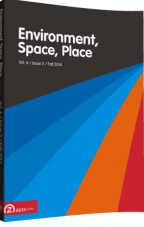The Triumphal Arches of Gallia Narbonensis: Iconography, Boundary and Identity
The Triumphal Arches of Gallia Narbonensis: Iconography, Boundary and Identity
Author(s): Daryn REYMAN-LOCKSubject(s): Philosophy
Published by: Zeta Books
Keywords: Roman frontiers; Iconography; Identity; barbarians;
Summary/Abstract: Often the term “Roman frontiers” is used to refer to the outer borders of the empire and, in some instances, the physical limes systems that demarcated the extent of Roman rule. However, it is also possible to discuss the frontiers of the internal provinces, some of which offered important strategic and political advantages to the Romans. Certainly, this is true of Gallia Narbonensis, an internal province that is modern-day Southern France and the Rhône Valley. Here, early Augustan urbanization schemes and imperial policy underlined the beneficial relationship between indigenous populations and the Roman military and aristocracy, resulting in urban and provincial landscapes that defined borders relevant to not only local urban populations, but also foreigners – Roman subjects and “barbarians” alike. One way to identify these ideological frontiers is through the examination of Narbonensian triumphal architecture, particularly arches. Triumphal arches are more prevalent in Gallia Narbonensis than in any other province in the Western Empire. During the early stages of imperial expansion, Augustus began new phase of triumphal iconography that took into account the differing secular ideologies of the frontier and interior. Where the aggressive and militaristic traditions of border tribes were used as a means to defend the Empire, the populations of the interior were demilitarized – an act which was called peace by the imperial government. The non-military virtue, in addition to urbanization, set those identified as Roman apart from those seen as barbarian.
Journal: Environment, Space, Place
- Issue Year: 2014
- Issue No: Vol.6/2
- Page Range: 31-68
- Page Count: 38
- Content File-PDF

